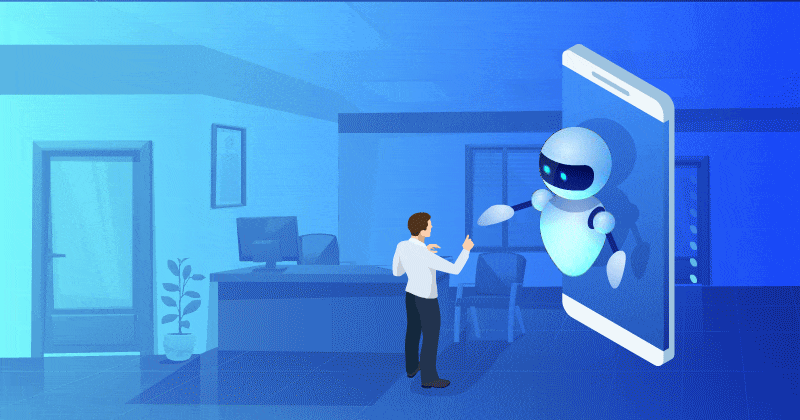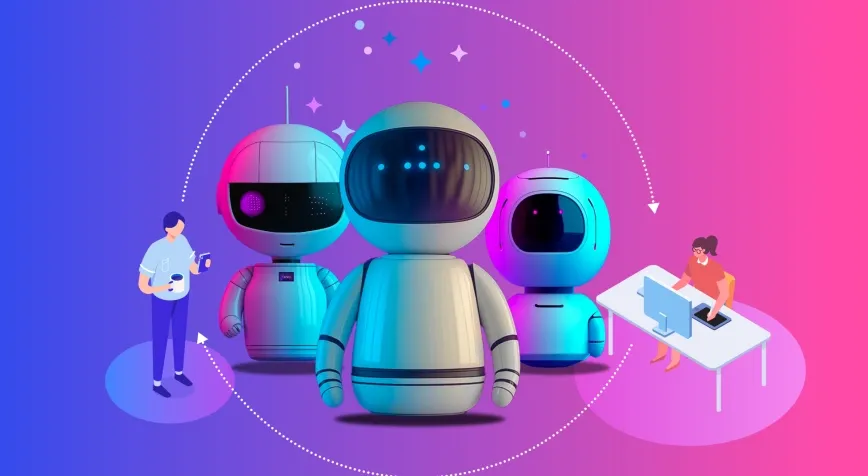Agentic AI represents the next evolution of AI, where machines don’t just respond to prompts – they make autonomous decisions and pursue self-defined goals.
While tools like ChatGPT mark an impressive milestone, agentic AI has the potential to fundamentally transform how machines interact with and solve problems in the world.
Generative AI vs. Agentic AI: Key Differences
The primary difference between generative and agentic AI lies in how they approach tasks and decision-making.

Generative AI (like ChatGPT, Google Gemini, and Claude) is reactive. It generates responses based on vast training data when prompted but lacks long-term objectives or context comprehension. It excels at tasks like writing, image creation, or coding assistance.
Agentic AI, on the other hand, is proactive and autonomous. These systems can set their own goals, strategize, adapt, and make decisions based on changing circumstances.
Think of generative AI as an assistant awaiting instructions, while agentic AI is more like a colleague who takes the initiative to work towards broader objectives.
For example:
-
A generative AI would help draft an email when asked.
-
An agentic AI could proactively manage your inbox, prioritize messages, draft responses, and even schedule follow-up meetings, continuously adapting based on your feedback and evolving priorities.
The Building Blocks of Agentic AI
What makes agentic AI revolutionary is its architecture. Unlike generative AI, agentic systems have advanced planning modules, memory systems, and decision-making frameworks that help maintain context and pursue long-term goals. They can:
-
Break down complex tasks into manageable steps.
-
Prioritize actions and adjust strategies when needed.
-
Recognize when their approach isn't working and recalibrate.
These capabilities allow agentic AI systems to function with a degree of autonomy and purpose that goes beyond simple content generation.
Convergence of Generative and Agentic AI
We are starting to see early signs of convergence between generative and agentic capabilities in mainstream AI tools. For example, OpenAI’s introduction of scheduled tasks in ChatGPT allows the AI to operate semi-autonomously.
This feature enables the AI to perform scheduled actions and manage ongoing responsibilities without constant prompting.
Additionally, rumors about OpenAI’s projects like “Operator” and “Caterpillar” suggest that future AI systems may possess even more autonomy, including the ability to search for information, solve problems, and navigate digital environments with minimal oversight.
Real-World Applications of Agentic AI
The potential applications of agentic AI are vast and transformative:
Workflow Automation: AI could manage entire workflows, anticipating bottlenecks, suggesting improvements, and autonomously handling routine tasks.
Manufacturing: Agentic AI could optimize production lines in real-time, responding to unexpected challenges while improving efficiency.
Personal Assistance: Instead of just responding to commands, agentic AI could actively manage your daily tasks, making your work-life more efficient.
The Future of Human-Machine Collaboration
As agentic AI systems evolve, they will shift our relationship with machines from command-response interactions to true collaboration. We’ll work alongside AI systems that can engage in dynamic conversations, propose alternative solutions, and challenge our assumptions.
Challenges and Opportunities Ahead
The rise of agentic AI presents several challenges:
Ethical Boundaries: How do we ensure that autonomous AI systems align with human values and interests?
Transparency in Decision-Making: How do we maintain transparency in how these systems make decisions, especially as they become more autonomous?
Balancing Automation with Human Oversight: As AI systems take on more responsibilities, how do we strike the right balance between automation and human control?
These questions will shape the future of agentic AI and its role in society.







